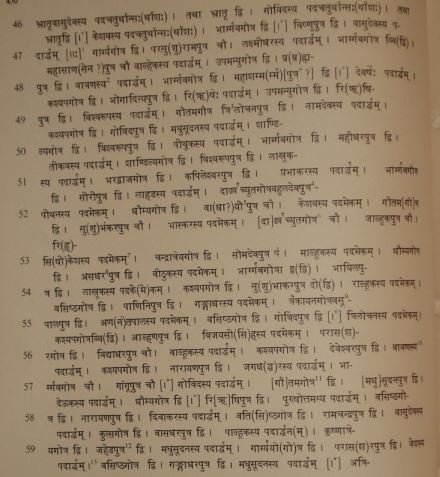|
INSCRIPTIONS OF THE CHANDELLAS OF JEJAKABHUKTI

______________________
1 Delete what is within the brackets, as already noted by C.
2 C. observed that probably Rāvaṇasya (or Vāmanasya ?) is intended here. But the name cannot
definitely be made out as the consonants of the first two aksharas are similar in form. The first, of
course, cannot be r.
3 Either there is no mention of dvi after gōtra and the name begins with tri, or ti may be that the father
Lōchana was Trivēda and the son was Dvivēda.
[4] The surname is omitted here.
[5] This name also figures in another grant of the king and hence the first of its letters is read as dh. See No. 134, l. 12.
6 Originally vā, changed to dā.
7 Originally sh, changed to ch.
8 He may have been Aśvadhara or Āśādhara, also mentioned in l. 64 below.
9 These two letters may also be read as Vastu. Here too the surname is not mentioned. 10 See n. on l. 48, above.
11 The bracketed akshara looks like gpai ; and the two letters madhu, that follow, are crudely engraved.
12 The reading of the first two syllables is distinct, but the name may also have been Jāhaḍa.
13 This akshara was first cut as pa and later on altered to va. The original sign is still visible. The
same is the case with g in gōtra before it in the same line.
|